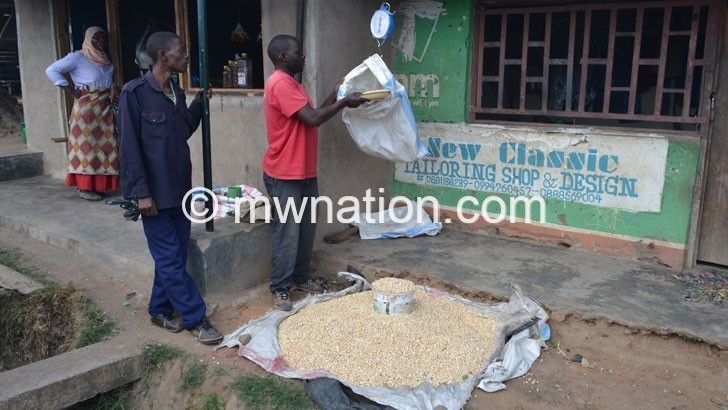Food prices push inflation into double digits at 10.4%
Malawi’s year-on-year headline inflation inched up by 0.8 percentage points to 10.4 percent in November as food prices continued biting hard coupled with the rise in fuel prices.
Published figures from National Statistical Office (NSO) yesterday show that food inflation rose to 17.2 percent from 16 percent in October while non-food inflation rose marginally from 4.3 percent in October 2019 to 4.7 percent in November 2019.
Over the past 11 months, non- food inflation has been stable within a four to five percent range while food inflation has been averaging 13 percent.

The price of maize, Malawi’s staple food, has been on an upward spiral in the past months, and a kilogramme of the grain is currently trading at K360 per kilogramme (kg), or K18 000 per 50kg bag in some parts of the country.
Reserve Bank of Malawi (RBM) spokesperson Mbane Ngwira yesterday linked the stable and low core inflation to the stability of the kwacha, stressing that the rise in food inflation is temporary.
“Encouragingly, the spillover effects from food inflation to non-food inflation have been mute, reflecting the credibility of monetary policy. Food inflation should come down rapidly next year due to favourable base effects.
“We project average inflation for 2019 to still be in single digit at 9.2 percent. We also maintain our target of five percent inflation rate during the first quarter of 2021,” he said.
On his part, Economics Association of Malawi (Ecama) president Chikumbutso Kalilombe said in an interview yesterday that authorities should put in place measures to contain what causes reversals in positive inflation figures.
“At this point, the combination of soaring maize prices and the fairly recent increase in fuel prices is what we contend to be the cause of inflation rise.
“Inflation trends are dependent on time of year and it is common that in growing season, with food being scarce, such should be the case,” he said.
In its latest economic review report, investment and advisory firm Nico Asset Managers also projected a rise in inflation, owing to rising food prices, particularly maize and fuel pump prices. Malawi’s annual rate of inflation has been falling steadily since June 2016 helped by declining food prices, a relatively stable kwacha and lower international fuel prices. Maize, as part of the food component, impacts the country’s economy given that it constitutes 45.2 percent of the Consumer Price Index (CPI), which is an aggregate basket of goods and services for computing inflation.





